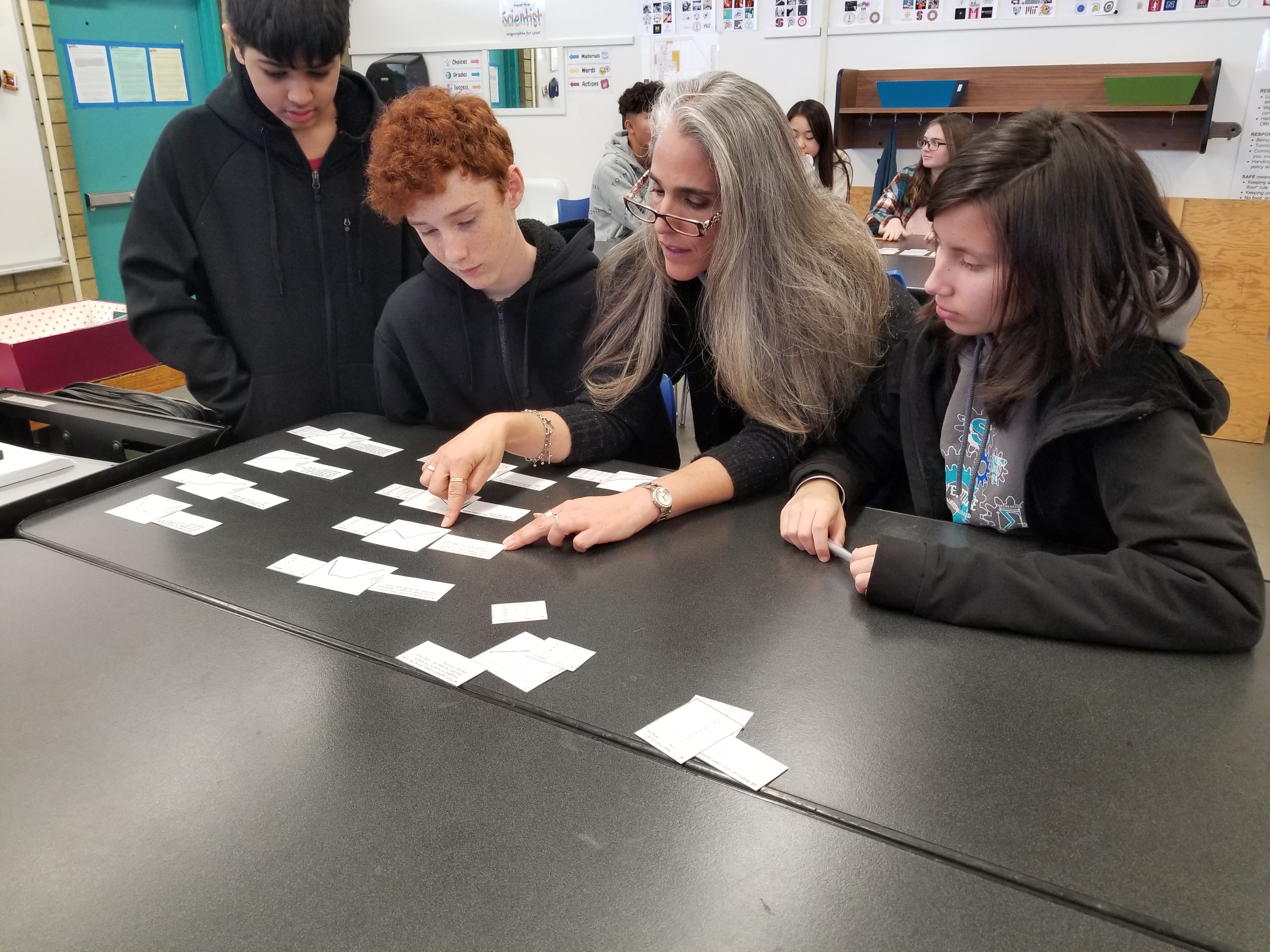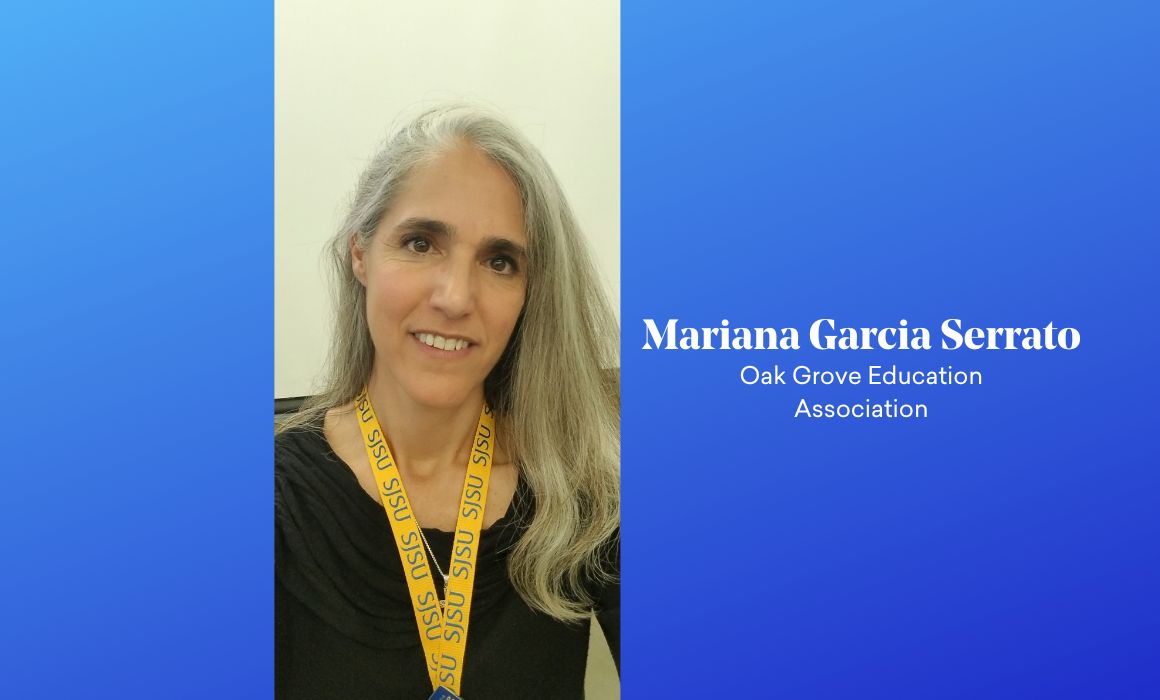A RECENT ASSIGNMENT in Mariana Garcia Serrato’s classroom was to “rescue” famous scientists from the evil Time Cruncher. On students’ individual computer screens, the scientists appeared as prisoners behind bars. But with every correct answer to a set of STEM questions, the scientists moved closer to freedom.
Instead of taking a test, Garcia Serrato’s students were winning a video game — assuming their answers were right.
“It sounds silly, but games instead of tests create an environment where students have fun instead of getting nervous and anxious,” says Garcia Serrato, who uses Google Sheets to create video games with superheroes and science themes.
Students gleefully run to her class on test day — or as students call it “Boss Battle Day.” Those scoring 100 percent get bragging rights and receive online trading cards. Students with lower scores may retake the test after reviewing the material, and are incentivized by the thought of winning.
“In my classroom students are not constrained by adult thinking, so they do think outside the box. Instead of asking ‘why can’t we do this?’ they just go and do.” -Mariana Garcia Serrato
Garcia Serrato teaches science and STEM to students in grades5-8 in the AdVENTURE STEM program, which is a school within a school for 240 students at Herman Intermediate School in San Jose. She was one of the program’s founders 13 years ago, and today is the lead teacher. In 2019, AdVENTURE was named a California Distinguished School for making exceptional gains in implementing academic content and performance standards.
The Oak Grove Education Association member is a fully certified PBS Media Literacy Educator, a Google Certified Educator, a KQED Media Literacy Innovator Elk Grove Education Association and winner of numerous awards. She enjoys sharing ideas on her blog, Teaching Above the Test, and connecting with other educators using the Twitter handle @MarianaGSerrato.
To make STEM relevant for all students, Garcia Serrato operates a fully gamified, project-based learning classroom, where students are given freedom to come up with ideas on how to make the world a better place.

Garcia Serrato operates a fully gamified, project-based learning classroom.
Her students developed a series of videos to convince people to limit their food waste. They created a cookbook for leftovers. They published tips on how to save and reuse water. They research worthy charities and fundraise for them. Like their teacher, they have created online games and board games on topics such as photosynthesis and genetics.
“My favorite was a genetics game where students created a ‘super hero’ or ‘super villain’ using dominant and recessive traits based on characteristics they would like to see in imaginary characters.”
Students are always bouncing ideas off each other and building things together on computers or in the Makerspace area with 3-D printers and robotics.
“In my classroom they are not constrained by adult thinking, so they do think outside the box. Instead of asking ‘why can’t we do this?’ they just go and do.”
“Ms. Garcia’s class is a great environment for learning. Her curriculum is fun, engaging and ultimately allows us to test to our highest potential,” says Ellie Le, a 7th grader.
“I really like this type of class because it helps me learn new things in a fun way,” says Sai Vernekar, an 8th grader. “The things we do are interesting because there is always some kind of twist or activity that makes me enjoy the class.”
Garcia Serrato was born and raised in Mexico City and learned to speak English as a toddler. Her father is a lawyer in Mexico and her late mother was the only woman in her law school’s graduating class. She moved to California in 1998with her then-husband.
“I was a stay-at-home mom, although I graduated from LaSalle University in Mexico City with degrees in science and biochemistry,” she recalls. “I began volunteering at my kids’ school and saw there was a lack of science in education, because at that time, students were only tested on math and English.
“I would ask the principal, ‘Why don’t we have science here?’ And the principal said, ‘Why don’t you become a teacher?’ So, I went back to school and got my credential at San Jose State University and have been teaching for 15 years.”
When she was a student, a teacher in Mexico encouraged her to pursue science, and she emulates his teaching style in her own classroom.
“In his eyes, everybody had the ability and wherewithal to succeed in any area. He told students, ‘You are not leaving this class until you understand this material.’ I don’t think I would have gone into science without his encouragement. And I’m so glad I did. To me, science literacy can be used to combat misinformation. It invites students to wonder about the world around them. It encourages them to use their knowledge to make the world a better place.”

The Discussion 0 comments Post a Comment